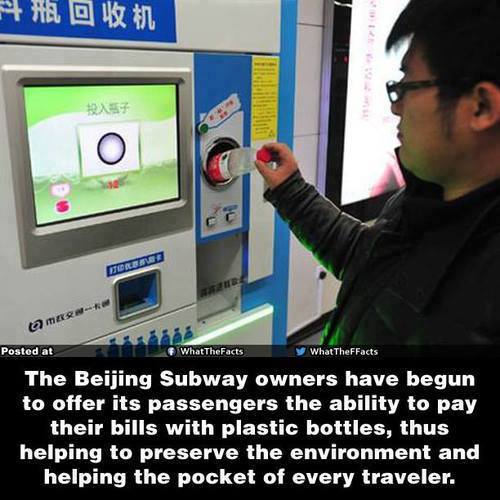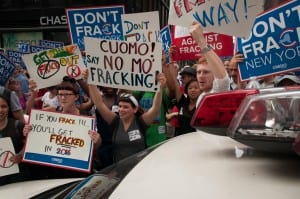Under the Dome
In 2003, after the National Book Foundation presented Stephen King with a distinguished career award, a big hue and cry went up from all the snobbish critics and authors who regarded him in much the same way that Dumbo was viewed by the other elephants. King’s acceptance speech was an eloquent testimony to his belief in a people’s art:
Now, there are lots of people who will tell you that anyone who writes genre fiction or any kind of fiction that tells a story is in it for the money and nothing else. It’s a lie. The idea that all storytellers are in it for the money is untrue but it is still hurtful, it’s infuriating and it’s demeaning. I never in my life wrote a single word for money. As badly as we needed money, I never wrote for money. From those early days to this gala black tie night, I never once sat down at my desk thinking today I’m going to make a hundred grand. Or this story will make a great movie. If I had tried to write with those things in mind, I believe I would have sold my birthright for a plot of message, as the old pun has it. Either way, Tabby and I would still be living in a trailer or an equivalent, a boat. My wife knows the importance of this award isn’t the recognition of being a great writer or even a good writer but the recognition of being an honest writer.
Frank Norris, the author of McTeague, said something like this: “What should I care if they, i.e., the critics, single me out for sneers and laughter? I never truckled, I never lied. I told the truth.” And that’s always been the bottom line for me. The story and the people in it may be make believe but I need to ask myself over and over if I’ve told the truth about the way real people would behave in a similar situation.
Most people are aware that King writes horror stories but the reference to the muckraking Frank Norris hints at a side of the author that many of his fans never considered. King is also an outspoken liberal who takes on social and political issues but without the sterile didacticism so pervasive in leftist fiction.
When I discovered that CBS had adapted “Under the Dome” as a 13 episode series, whose finale aired last Monday night, I was eager to watch it not only as a long-time King fan but as an ecosocialist anxious to see how what some regarded as a parable on the environmental crisis would play out. Although I had not read the novel, I assumed that with King serving as executive producer it would ensure that the TV series would remain faithful to the novel. But only after watching the finale, a dreary conclusion to an altogether dreary series, did I begin to consider the possibility that King’s intentions would be subverted by another big-name executive producer: Stephen Spielberg as well as the show’s major creative force, one Brian K. Vaughan.
Before dealing with the novel and its original agenda, some thoughts on what was likely the worst adaptation of the author’s work ever made. Since King is on record as hating Stanley Kubrick’s masterful “The Shining”, I would love to get him alone for five minutes to find out why he did not leave this TV show on the cutting room floor in its entirety.
“Under the Dome” sticks to the premise of the novel, namely that a mysterious transparent dome lands on a town called Chester’s Mill cutting it off from the outside world. Nobody can get in and nobody can get out. If you were unfortunate enough to be on the perimeter of the dome at the moment it landed, you would be sliced in two. Each week the show begins with the shot of a cow being cut right down the middle and a small plane bursting into flames as it crashed into the dome. It does downhill from there.
If this plot rings a bell, it might be because you have seen or are aware of the Simpsons movie in which the EPA puts a dome over Springfield because of the town’s repeated violations of environmental regulations, most of which can be traced to the town’s nuclear reactor or Homer’s reckless behavior—including the dumping of pig feces into a local lake. Ironically, the Simpsons movie has much more in common with King’s novel than the CBS adaptation.
The purpose of the dome remains a mystery throughout, approximating in some ways the monolith in “2001”. (Perhaps some critics have thatfigured out, but it always remained a mystery to me.) What was it doing there? Who was responsible? Inquiring minds are dying to know.
The TV adaptation also retains the morality play that is essential to all of King’s works that are not the place to go for postmodernist irony. Like Dickens and all other masters of pulp fiction, King sets up clearly recognizable good guys and bad guys. The bad guy is James “Big Jim” Rennie, a politician and used car dealer who runs drugs as well. Dean Norris, Walter White’s brother-in-law and DEA agent on “Breaking Bad”, plays Big Jim. One surmises that Norris was cast in the role to play off the vibes of the memorable AMC series soon to conclude. Chester’s Mill is every bit as murderous and corrupt as White’s Albuquerque, all the more so after the dome cuts it off from the broader forces of law and order. It is an embodiment of Hobbes’s Leviathan.
The good guy, relatively speaking anyway, is Dale “Barbie” Barbara, a former Green Beret who despite coming to town as an enforcer for a loan shark can be relied upon to defend the innocent against the depraved.
The innocent turns out to be four teenagers who discover that they have powers to communicate with the dome. When they place their hands on it, they receive communications from some higher intelligence but without sufficient clarity to know where the dome came from or why it is there. Eventually they discover a mini-dome in the nearby woods that evoke the mini-me character in Austin Powers. At least with mini-me, you know what he was about. With the mini-dome, it is mostly a guessing game about its purpose. Even more mysteriously (or confusingly, to be more accurate), there is a black egg under the mini-dome that has some sort of awesomeness about it that manifests itself in unpredictable ways like making a room and its furniture go nuts like Linda Blair’s bedroom in “The Exorcist” but without the classic movie’s menace. In fact the main purpose of the mini-dome and the big daddy dome is to make the viewer scratch their head and ask what the hell is going on.
I waded through all 12 episodes with a mixture of boredom and frustration just to finally find out what the hell was going on. In the final five minutes Barbie’s love interest, who turns out to be the “monarch” who will either save or destroy Chester’s Mill, throws the black egg into the local lake and produces what amounts to a fireworks display that reaches the top of the dome. Finally, the secrets will be revealed. But no, the only thing that happens at that point is the closing credits. It only becomes clear to me at this point that this was not the typical Stephen King adaptation like “It” or “Tommyknockers” that ends with a satisfying apocalyptic bang. No, it ends with a total whimper, leaving you mystified as to the meaning of the dome. CBS wants you to tune in next season to remain mystified and to continue watching commercials, the primary justification for watching this nonsense.
“Under the Dome” was developed by someone named Brian K. Vaughan. As I began writing this paragraph, I bet myself a quarter that this guy was responsible for “Lost”, another CBS series that left you either bored and befuddled, or enthralled. I count myself in the former group. “Lost” was defiantly nonsensical. Based on the premise that survivors of a plane crash figure out a way to survive on a desert island, it made frequent and outrageous assaults on logic. If you enjoyed “Lost”, you will probably enjoy “Under the Dome”—god have pity on your soul.
This brings me to another alien influence on “Under the Dome”, the one-and-only Stephen Spielberg (thank god). To put it succinctly, Spielberg must have convinced the creative team working on “Under the Dome” to absorb the philosophical and esthetic heart of “Close Encounters of the Third Kind”. Instead of stentorian notes blasting forth from the mother ship at the end of the film, the CBS adaptation has pink shooting stars streaming toward the top of the dome. For what purpose who knows.
I would refer you to have a look at an altogether amusing review of the final episode by Tim Surrette who wrote:
For once, after 12 episodes of defying medical science by functioning without a working brain, Officer Linda actually made some sense. It all started at the very beginning of the episode when the kids were gathered around the mini-dome spouting their craziness about domes and monarchs that they believed based on absolutely nothing. It was the usual dull regurgitation. The kids thought the egg was the power source of the dome. The kids thought the dome was talking to them. The kids thought there was a monarch that needed some crownin’. And Linda said, God bless her, “What is that supposed to mean?” It’s a question we all asked ourselves over the course of Season 1 as we watched these mentally challenged children make illogical leaps and accept where they landed as fact. It’s also a question that would never be answered anytime during this episode. “I know how it all sounds, but I believe them,” Carolyn actually said. Carolyn, shut your damn mouth, you’re only encouraging them.
Not long after the finale ended, I took a quick look at some of the original reviews to remind me of what struck me at the time the novel appeared in 2009. The November 18th Christian Science Monitor nailed the environmental angle perfectly: “In a matter of days, the environmental reality sets in, too. Fall in Maine means crisp temperatures, but under the dome it feels like an endless Indian summer. Forget famed foliage in Chester’s Mill. Instead, the leaves go limp and brown. Streams dry up, animals turn suicidal, and pollution clings to the dome, giving the sky and stars an eerie hue that leaves everyone unsettled.”
In all the years that I have been writing about environmental issues, I have found myself frequently debating with Marxists about issues of “carrying capacity”, something they view as a concession to Malthusianism. I always replied that the planet earth was more like a fish tank than Marx could have anticipated in 1850. Put too many fish in a ten gallon tank and they begin attacking each other and dying from inadequate living conditions. That is likely what King was addressing, using the dome rather than the fish tank as metaphor. If that interests you (as well as King’s superlative prose), I urge you to read the novel as I plan to do the first chance I get. If flights of illogic and Spielbergian fantasia are your cup of tea, stay tuned to CBS
Louis Proyect blogs at http://louisproyect.com and is the moderator of the Marxism mailing list. In his spare time, he reviews films for CounterPunch.




